Ovula ovum (Linnaeus, 1758)
Egg shell or egg
cowry, 106mm
Externally,
the shell of Ovula ovum is pure shiny white, but the interior of the
shell visible through the aperture of an empty shell is dark reddish purple.
The animal of an adult specimen is jet black scattered with small white spots.
Usually, the mantle is fully extended, completely hiding the white shell. In
most of the photos below, the animal was disturbed by the photographer or strobe
lights and retracted its mantle a bit. This species feeds on soft corals in
the genera Lobophytum or Sarcophyton, most often the former.
The species is usually rare in the Marshall Islands, although there have been
reports of sporadic population blooms in parts of the southern Marshalls. With
more than 25 years of diving in the northern half of the Marshalls (Kwajalein,
Enewetak, Namu, Bikini, Ujelang, Rongelap, Utirik, and Lib), the two of us have
possibly seen about 20 specimens in all. There is an abundance of the proper
food and we do see broken and empty shells occasionally, so we suspect there
may be predators in this area that keep the population down. When we do see
a living specimen, it is usually exposed like a big black blob on top of its
soft coral prey, so it would make easy prey itself. While we have seen specimens
in a variety of lagoon and seaward reef habitats, the best areas seem to be
large flat-topped lagoon pinnacles that have an abundant growth of Lobophytum
and Sarcophyton soft corals.
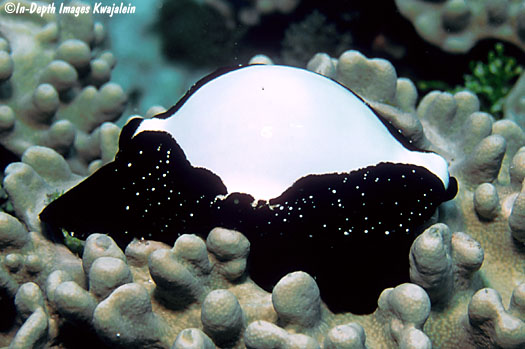
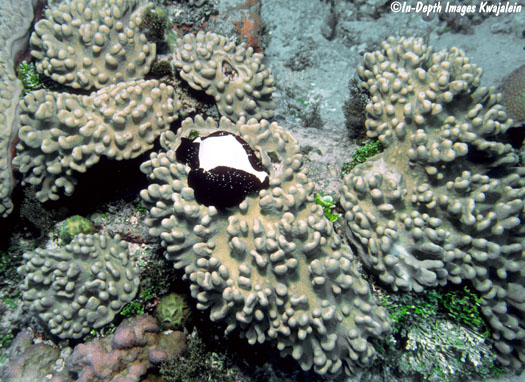
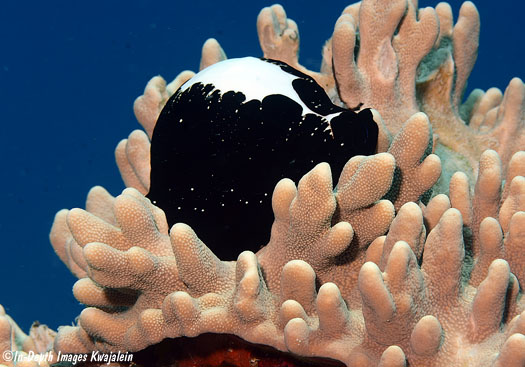
The individual below is feeding on the edge of a colony of Sarcophyton.
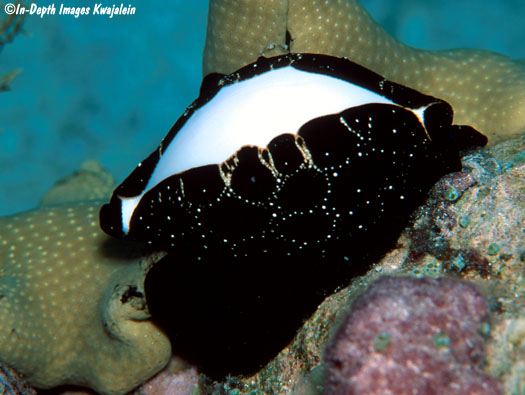
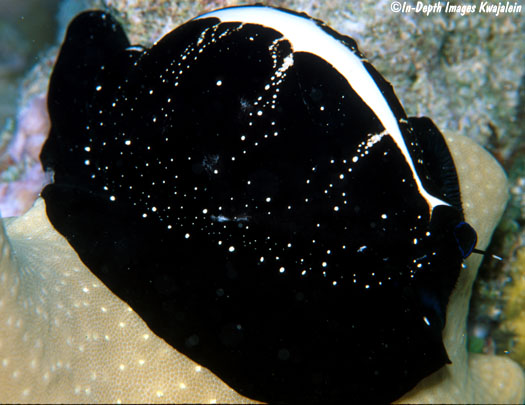
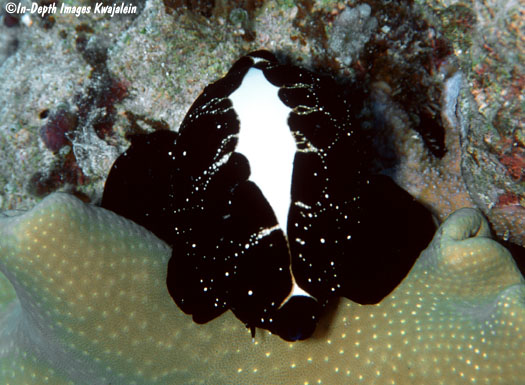
This one was feeding on small colonies
of Cladiella soft coral. The grazed area is the white patch at lower
right.
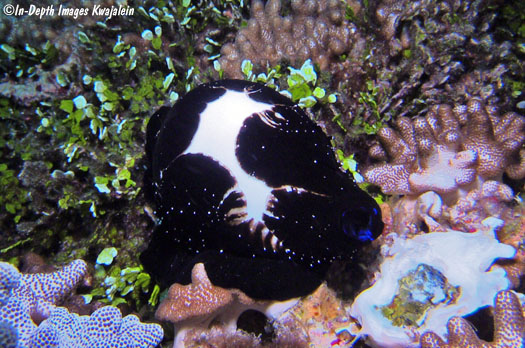
Very young and thin specimens have
a black mantle ornamented with orange-tipped white bumps. With the mantle all
the way up, it looks a lot like some of the toxic phyllidiid nudibranchs such
as Phyllidia tula
or Phyllidia madangensis,
which may help keep it from being eaten by predatory fish. As they grow,
they lose the orange-tipped pustules.
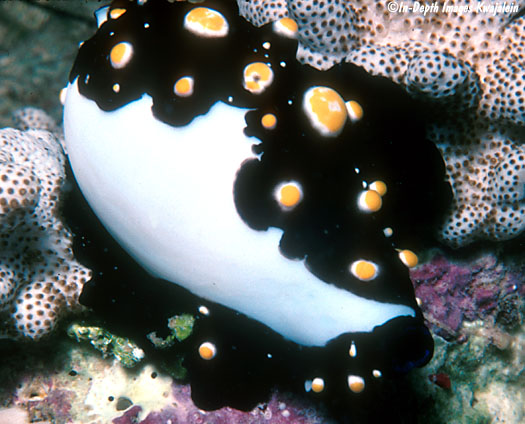
Very tiny specimens like the one below also look like phyllidiid nudibranchs.
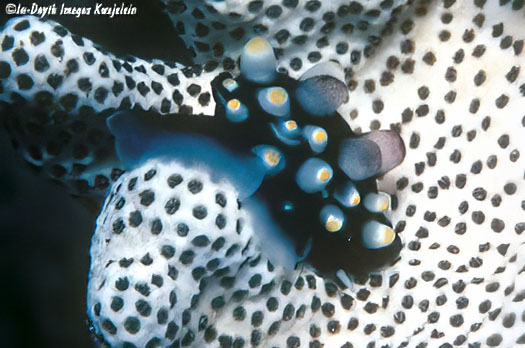
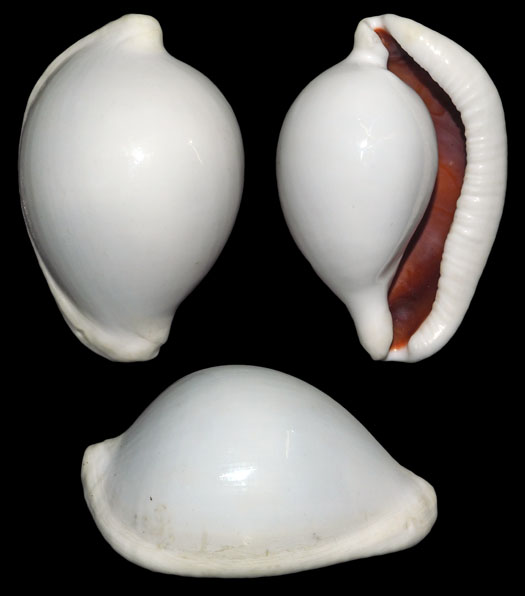
Created
22 September 2008
Updated 23 March 2020
Return
to ovulid list
Kwajalein Underwater home










